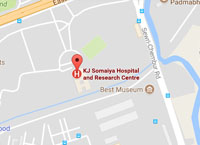13th August 2017
Expect plush lobbies, warm colours, couches in place of metal chairs, and video screens to distract you during an MRI.
It looks like a trendy cafe, but this is one of the reception areas at the Mahajan Imaging Centre in Gurugram. The idea is to offer interiors that do not constantly remind people of a hospital environment, says co-founder Ritu Mahajan.
Mahajan Imaging Centre co-founder Ritu Mahajan blanches at the thought of clinical hospital interiors. “When you are coming in for an MRI or PET-CT, you are obviously not in the best of health, and making you wait in dull clinical surroundings just adds to the stress,” she says.
Majahan focuses on creating innovative interiors that soothe the mind and relax the patient while meeting the stringent functional and technical requirements, she adds.
“The idea is to offer interiors that do not constantly remind people of a hospital environment.”
The MRI room at Mahajan in Gurugram, for instance, has a floor of artificial grass, picturesque nature-themed wallpaper and gentle lighting.
Across city hospitals, reception areas are morphing into hotel-style lobbies, hard metal benches are being replaced by plush couches. Blue-white lighting is giving way to soft yellow in common areas; windows are getting larger; tiles are patterned and walls, colourful.
At the KJ Somaiya Hospital’s year-old super-specialty centre in Mumbai, large glass windows give out onto trees planted specially outside the Intensive Care Unit and post-operative recovery rooms, which typically house patients who cannot leave their beds.
The lobby of the Apollo Hospital in Navi Mumbai has been styled after a luxury hotel — elegant furniture, plush lighting, art on the walls, dark wood, open spaces and warm colours.
“This eases the stress even for visitors and members of the staff,” says hospital CEO Ramesh Daswani. “Natural light and views of green outdoors have also been scientifically proven to improve health outcomes.”
At the Apollo Hospital in Navi Mumbai, everything from the private room doors to the lobby and reception areas have been styled after luxury hotels — elegant furniture, plush lighting, art on the walls, dark wood, open spaces and warm colours.
“The attempt is to provide an environment that is relaxing. An environment that looks like a hotel or a residence is certainly more relaxing than a hospital,” says chief operating officer Santosh Marathe.
At the Delhi government’s only paediatric hospital – the Chacha Nehru Bal Chikitsalay (CNBC) – young patients are welcomed by Goofy and Donald Duck, courtesy a Disney India initiative. Cheerful paintings made by children for an international competition also add colour to the walls.
“Children play here while waiting their turn at the outpatient department or while their parents are getting medicines at the pharmacy. The idea was for the cartoons on the walls and colourful exteriors to make the hospital seem less daunting even from the outside,” says Dr Anup Mohta, medical director at CNBC.
At Indraprastha Apollo Hospitals, a soothing effect is created using ambient lighting, soothing music and gently moving imagery.
“Our patients have reported reduced anxiety and claustrophobia during their hospital visits and stays as a result of the soothing environment and prudent counselling,” says Dr Anupam Sibal, group medical director at Apollo Hospitals Enterprise.
Since undergoing an MRI can be a claustrophobic experience for some, Mahajan has invested in software that runs videos inside the machine during a scan.
“The patients can choose the videos that they want to watch while getting their MRI,” says Mahajan. “Overall, our aim is that this should feel more like a home than a diagnostic centre. The era of drab white plastered walls in hospitals and clinical environments is now a relic of the past.”














